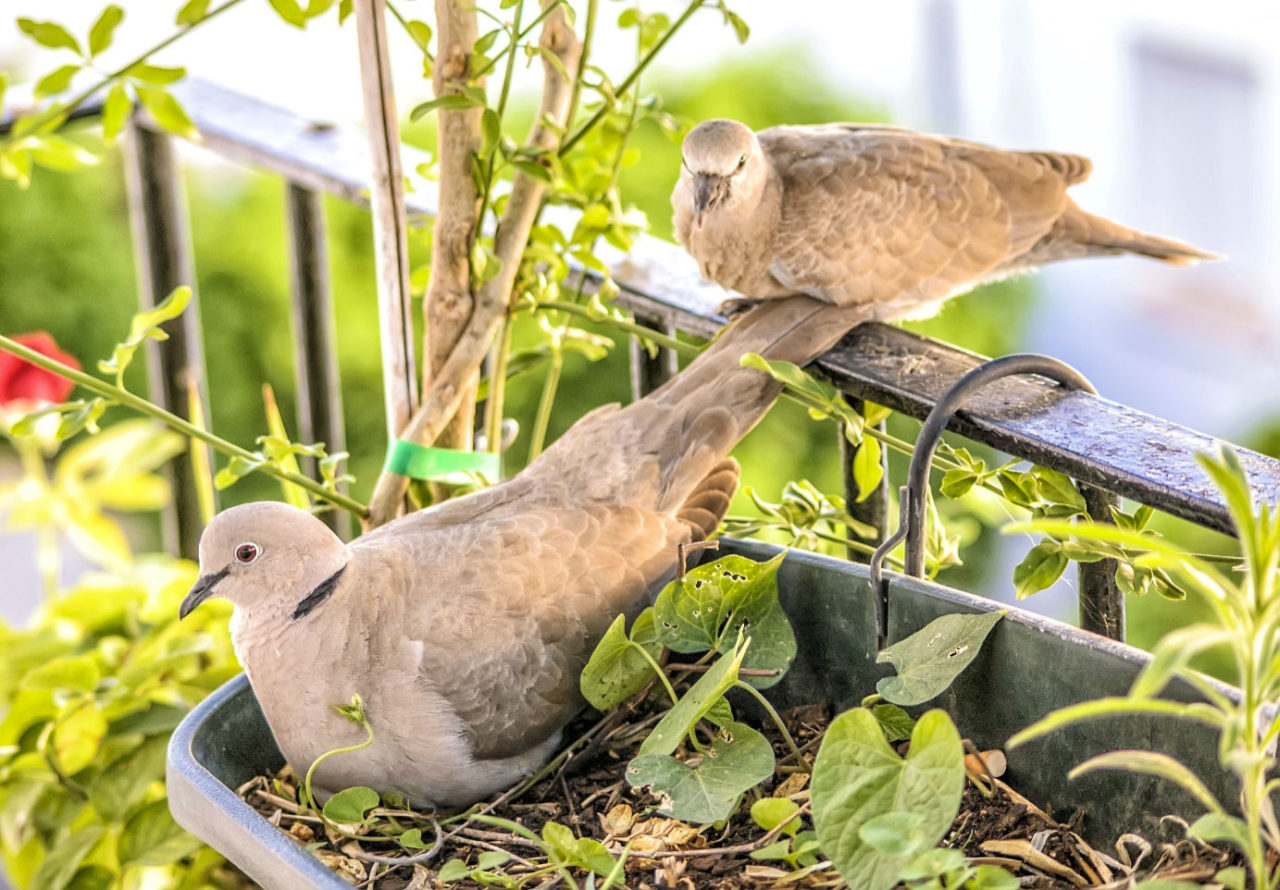Introduction to nature in towns and cities
Because of its small size, Belgium is one of the most urbanised countries in the world. Indeed, according to the World Bank Belgium’s urban population in 2019 was 98%. This percentage may seem worrying when we consider the negative impact of urban development on biodiversity.
And yet our towns and cities can also play an important role in nature conservation and thus become home to a wide range of living beings or biodiversity. There are actually lots of solutions that would help us encourage and consolidate the presence of plant and animal species in our gardens, parks and urban centres. We would like to tell you about some of them in this article.

What is urban biodiversity?
First of all, let’s start by clearly defining what we mean by urban biodiversity. This concept, which is essential as we strive to find a better balance between humans and their natural environment, refers to the diversity of life in our parks, urban gardens and urban centres. So it incorporates different levels of organisation, namely genetic variability within species, diversity between species and diversity of ecosystems.
Urban biodiversity encompasses, on the one hand, ordinary biodiversity (house sparrows, blue tits, ladybirds, hedgehogs, ivy etc.), and on the other, rare or protected species (bats, peregrine falcons, wild bees etc.). The aim is to understand the relationship between these different species, as well as the services that nature can offer us, so that all living beings can live in harmony with each other.

5 ideas for promoting biodiversity in towns and cities
There are many techniques for enhancing urban biodiversity. However, they are all based on us making a joint effort to make our gardens, parks and entire cities more attractive to wildlife. Encouraging the return of different plant and animal species to our towns and cities is indeed the challenge!
1) Development of urban parks and other green spaces
Green spaces (park, wasteland, private garden, private and shared allotments etc.) fulfil many ecological and social objectives. In addition to reintroducing nature to the heart of our towns and cities andproviding a refuge for many species of flora and fauna, they play a major role in the quality of life of inhabitants. These natural spaces are places where people can meet, share ideas and create social connections and a real sense of community.
2) Differential management of public green spaces and private gardens
Not all green spaces in towns and cities have the same function. While some require more maintenance, others can leave more freedom to spontaneous flora and wild fauna. The aim of differential management is to adapt maintenance methods to different plant species and the space they occupy: limiting the use of plant protection products, rational water management and late mowing are some examples. So it is an opportunity to encourage spontaneous nature, with a diverse flora that attracts its own share of animal species. This differential management can also be applied in private gardens!


3) Integrating biodiversity into buildings
Increasingly popular in towns and cities, green roofs, green façades and the creation of specific shelters for fauna play an essential role in enhancing biodiversity.
In terms of flora, creating green roofs and façades creates opportunities for a wide variety of plants and vegetation to grow and provide shelter for lots of animals: insects, arachnids and birds will come to live, feed, reproduce and rest between two trips. You can even create roofs covered with a vegetable garden. A real urban agriculture project, they become new resources for the town or city’s inhabitants.
Building birdhouses, insect hotels, bat boxes or squirrel houses are some examples of developments that can make a real difference.
4) Establishing ecological continuity
Ecological continuity is essential in the fight against the fragmentation of natural environments in our towns and cities:
-
Parks and gardens, but also vegetable gardens, wasteland and woods, constitute reservoirs of urban biodiversity. So these green spaces play an important role as a sanctuary.
-
Ecological corridors are parts of the landscape, often linear (hedges, flower strips, rows of trees, series of ponds etc.), which connect different sanctuaries of biodiversity to each other. These natural structures provide an opportunity for fauna (birds, rodents etc.) to move and flora to spread.
-
Lastly, wildlife crossings let animals move freely and cross different obstacles such as fences or roads.


5) Preservation of pollinators
One of the processes most affected by urbanisation is pollination. Pollinators (bees, butterflies, bumblebees etc.) have seen their population decrease as our towns and cities have grown.
Wild bees are very active when it comes to pollinating flowering plants, including both wild and cultivated species. They therefore play an essential role in maintaining plant biodiversity. Their protection is a major challenge and a real priority. And there are various solutions for this, including planting flower strips containing melliferous plants, the differential management of the green spaces that encourage them and building insect hotels.
Promoting urban biodiversity: conclusion
We really do need to think about the world of tomorrow and future generations. The solutions we have at our disposal to create a sustainable world, where humans and nature live in harmony, do exist. Our towns and cities are made of concrete and tarmac, but they can be transformed to accommodate more and more biodiversity. This is the target we are aiming for at E-BIOM and the reason why we use our ecological and biological expertise for the benefit of businesses and spatial planning projects.


